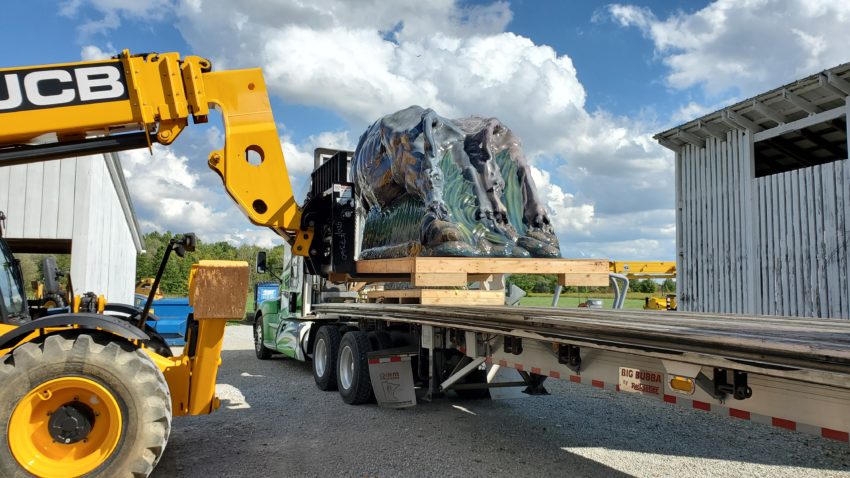Sometimes a conservation treatment is routine using familiar methods and materials to complete a project. Other times, treatments are complex and the methods are unknown for achieving stabilization of a work of art while at the same time returning it to its original appearance.
One such treatment is the outdoor sculpture, Sodbuster, 1983 by the late Luis Jiménez recently completed by Jim Gwinner, Public Art and Sculpture Conservator, of McKay Lodge Conservation Laboratory. Sodbuster features a bearded man in overalls pushing a hand-plow driven by two large oxen. The artwork is typical of the methods and materials of Luis Jiménez. It is a fiberglass substrate which has been spray painted with automotive paints and finished with a sprayed clear coat. The expertly placed colors initially appear to be many and complexly layered.
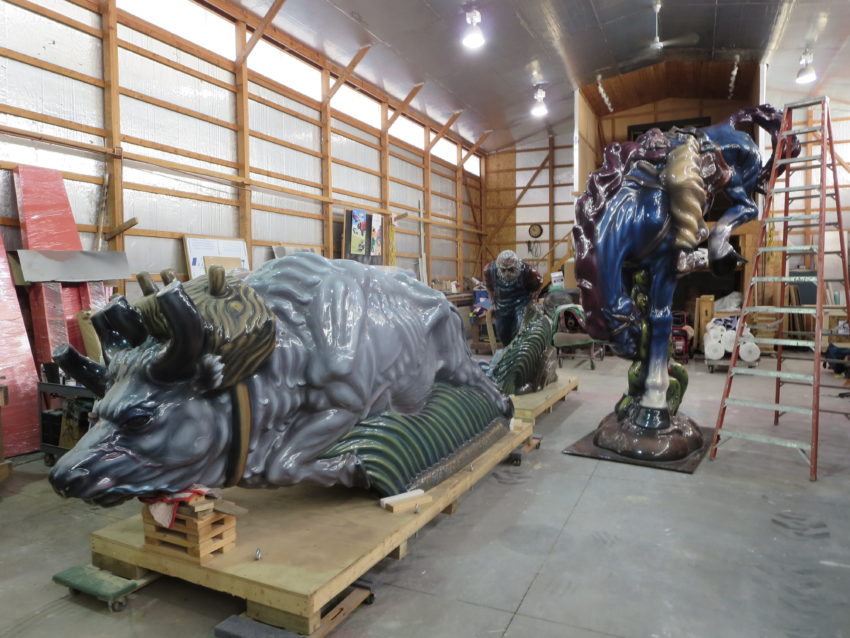
Sodbuster is owned by the Plains Art Museum in Fargo, North Dakota, and it was just reinstalled in the fall of 2019, but it seems like only yesterday that the sculpture had arrived at the McKay Lodge Conservation Laboratory facilities just outside of Cleveland, Ohio for conservation treatment.
Sodbuster is just one of the many painted fiberglass creations by the artist that Gwinner has treated. Over the years, in the course of his work he not only added to his skills for the required unusual treatments, he collected many unique tools and equipment to better perform each treatment. He also became intimate with the methods and materials of Luis Jiménez. In time, Gwinner has been able to deconstruct what initially appeared to be a very complex application of colors by the artist down to its fundamental simplicity. We tell more about this here.
Since few materials can withstand the elements, ravages of time, and public interaction the outdoor sculpture had a number of condition issues before treatment. The fiberglass substrate developed cracks, the colors faded, and the clear coat inevitably failed. In a previous blog, Conservation Treatment of Luis Jiménez Sculpture: Sodbuster In-Progress, the failing clear coat was reduced and repairs to the fiberglass substrate were complete, and it was now time to add the color.
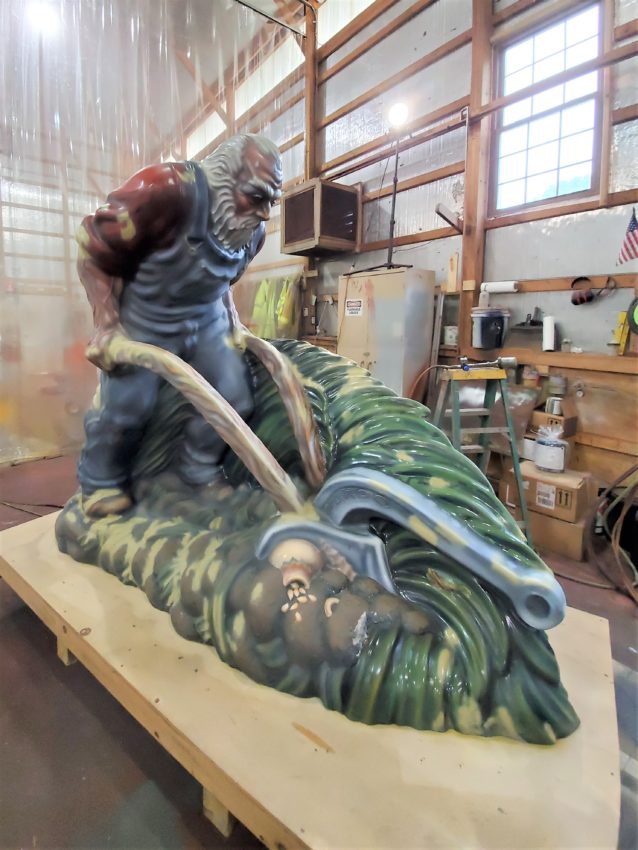
Gwinner is a conservator and a Professional Associate of the American Institute of Conservation (AIC), and he has also prior experience as an art fabricator from large-scale metal works to fiberglass sculpture. In this context, Gwinner uses his knowledge of conservation, fabrication, and industrial methods to recreate the complex materials and methods of Luis Jiménez, especially recreating the color scheme in compromised areas.
Gwinner initially faced this issue in 2013 when he treated Los Lagartos, the first sculpture by Luis Jiménez to be treated at the McKay Lodge Conservation Laboratory. At that time, Gwinner reached out to industry for solutions, and the PPG Automotive Refinishing Division, the world’s leader in this technology, answered. PPG was a natural choice since the company acquired Matthew Paints, the company who made the automotive paint originally used by the artist. Gwinner also corresponded with the artist’s estate and visited his former studio in New Mexico.
By 2019, Gwinner has successfully completed six conservation treatments of sculptures by the artist, and is always refining his understanding of the methods and materials of Luis Jiménez. Gwinner uses a 3M Sun Gun which mimics real daylight for color matching inside the artificially lighted company spray finishes shop, and a Rapidmatch X-5 spectrophotometer. The readings are used in tandem with PPG PaintManger Program software and a PPG state-of-the-art automotive paint mixing station. Also, a large bank of ready-to-dispense commercial automotive finish colors is immediately available to Gwinner. This entire automotive finishes system provides thousands of paint colors that can be custom mixed and tinted to precisely replicate a color and finish.
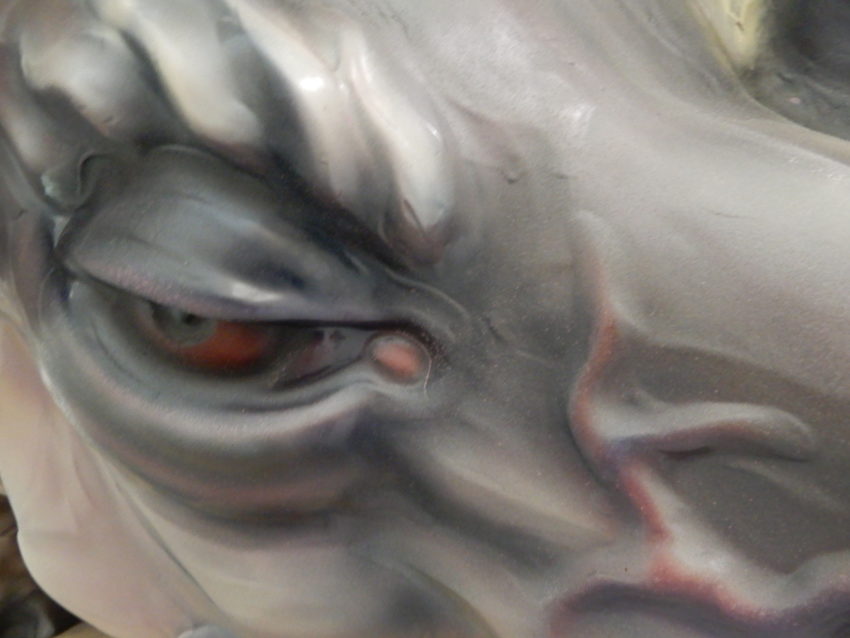
One still must carefully examine the surface of the artwork itself. As Gwinner explains, “the color application is very painstaking, as the artist never used “spot” colors on his work. Each and every color visible is a “blend” of several colors to achieve the final appearance, much in the same way of the four-color printing process commonly used in magazines and print work.” He stresses that it is the build-up of multiple colors that is important. There is no short-cut of “inpainting” losses with a single color, if done, a flat surface is produced which negatively effects the entire form.
Before inpainting the losses of paint, the original surface is protected by an intermediate clear coat, or in a sense, an isolating varnish from the subsequent retouching. Areas of the sculpture are taped in order to maintain the original lines of the artist instead of simply painting over them.

Sections are then covered with plastic to avoid unwanted over-spray on the original or completed areas. Though this was not likely the process used by the artist to paint the sculpture, it is a trick of the conservator to preserve as much of the artist’s hand as possible.
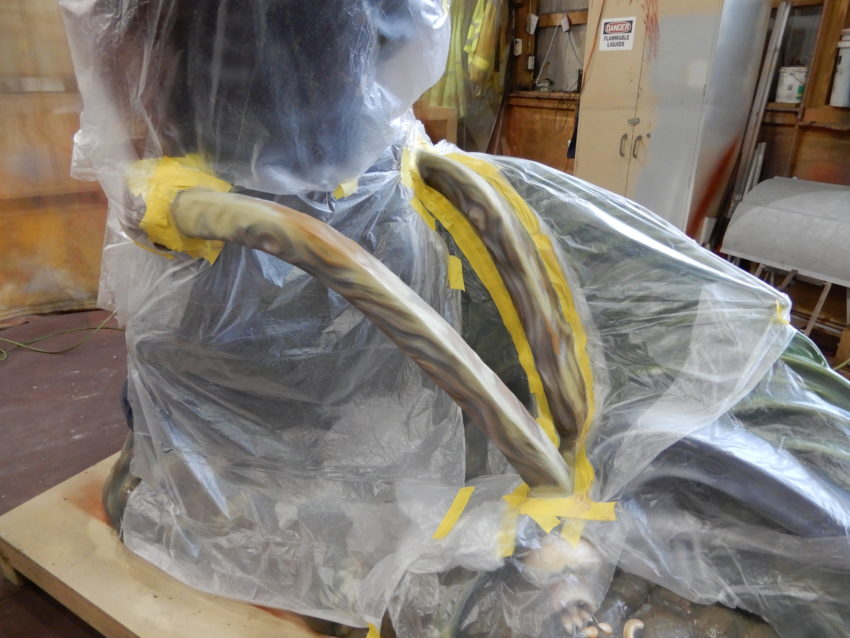
The intermediate clear coat is just the first layer of a four-stage process. The application of an intermediate clear coat (to protect the original color base), is followed by the color or base coating (touch-up), and then reapplication of the clear coating (to protect the newly applied color) followed eventually by a final clear coat made by PPG. A PPG commercial fleet-refinishing instructor specified the PPG clear coat for the optimal protection of the colors in extended and intense sunlight, an automotive coating PPG claims needs no waxing or other maintenance and has no determined end-of-life.
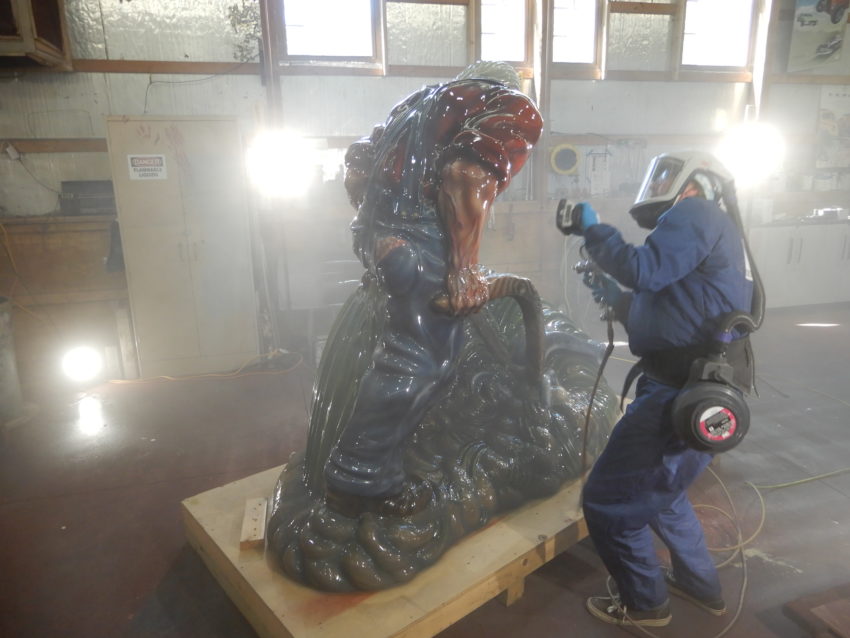
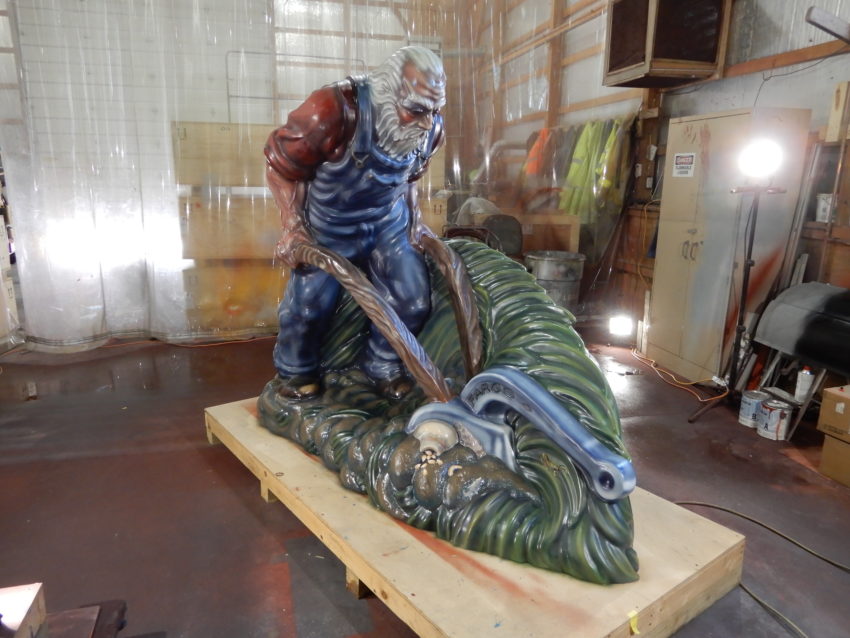
When the four-stage process is complete, Gwinner has matched the methods and materials of Luis Jiménez as much as possible. The after treatment result reveals a surface with color as vibrant and saturated as the original sculpture. Gwinner’s meticulous approach is evident in preserving the complex layers of color which animates all of Luis Jiménez’s painted fiberglass artworks. The clear coat also matches the intended gloss level.
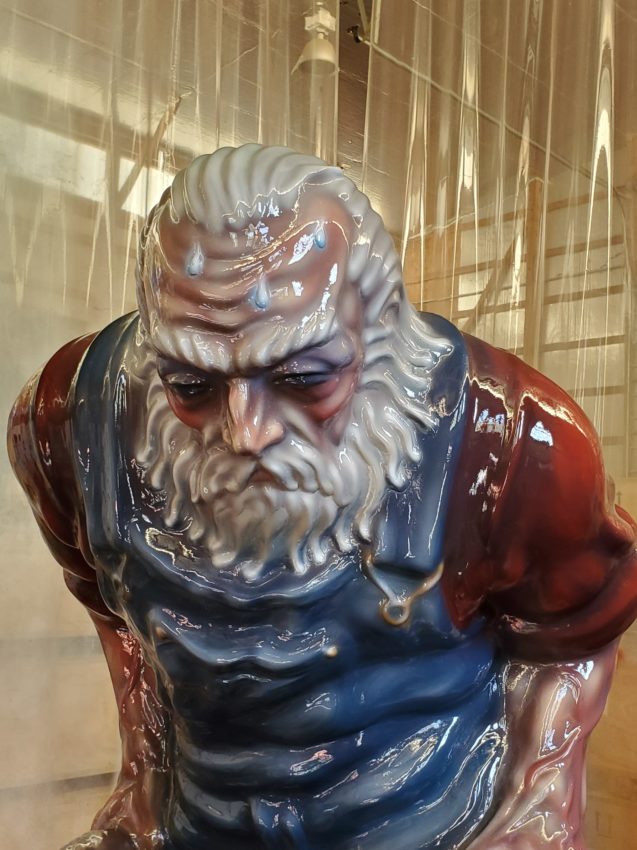
With the conservation treatment complete, it was time to return the sculpture to its home at the Plains Art Museum. The bearded plowman and the team of oxen were carefully loaded onto a flatbed for the 1,000 mile journey to Fargo, North Dakota from Oberlin, Ohio.
